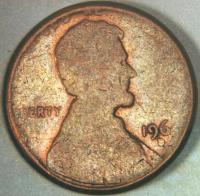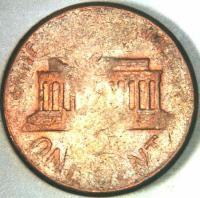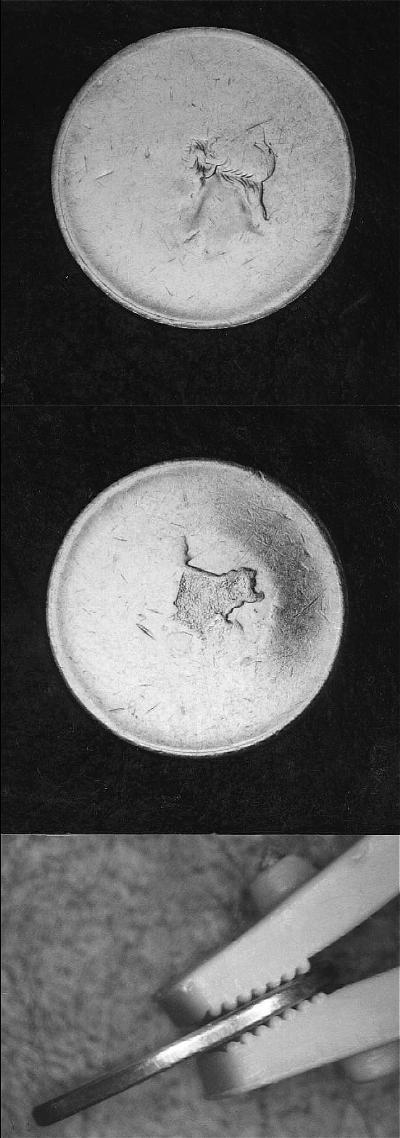

Ken Potter's Educational Series ...


Ken Potter's Educational Series ...
Die Adjustment
Strike
Or
Weak Strike?
by Ken Potter - NLG
May 12, 2001
© Ken Potter 2001
While some folks are
convinced that Die Adjustment Strikes, (often referred to as Die
Trials), can be identified as such in reference to specific coins, it it my
contention that there are a number of causes of Weak Strikes; that the Die
Adjustment Strike is just one of several forms of Weak Strike, all with the
same effect that is indistinguishable as to exact cause. It is my contention, while
we know that Die Adjustment Strikes do occur, that unless you were standing right
in front of the press and watched its pressure adjusted with the very coin you have, (or
unless you are God), it is impossible to differentiate a Die Adjustment Strike
from other causes of Weak Strikes. For all practical purposes, a Weak
Strike is a Weak Strike no matter what kind of fancy name you want to call
it!
Others will have differing opinions but over 25 years spent in a
manufacturing environment, (with most of it spent in a stamping plant full of presses),
convinces me that there are far too many factors to be considered as causes of Weak
Strikes for anybody to be able to isolate a coin exhibiting these features as being
from specific set of circumstances.
With that said, lets take a look at a couple of spectacular
examples of this error type.


Our 1964-D Lincoln
cent displays a beautiful example of the Weak Strike. Undoubtedly some weak
strikes occur after dies have been set and the pressure is gradually adjusted upward until
sufficient to fill the details of the die. Early strikes from this process can be
very weak; they will gradually get stronger as pressure is increased. Other factors, such
as loss of power or loss of hydraulics, (amongst others), have been identified as possible
causes of weak strikes.
Coins that are just a bit weakly struck command no premium while
very weak strikes can command significant premiums. The 1964-D Lincoln cent shown
here sold from my inventory list for $60.00.

Our next coin is a Weak Strike on a (2000)-? Massachusetts quarter. Notice that not only is the area of design detail on the obverse (Washington side) and reverse extremely weak but the reeding on the edge is non-existent. On coins that have reeding this diagnostic helps to differentiate a Weak Strike from a Filled Die error. According to Fred Weinberg, who supplied the coin for photography, this one is worth about $400 to $450.
Ken Potter is the official attributer and lister of
world doubled dies for the Combined Organizations of Numismatic Error Collectors of
America and for the National Collectors Association of Die Doubling. He
privately lists U.S. doubled dies and other collectable variety types on both U.S. and
world coins in the Variety Coin Register.
For more information on either of the clubs, or on how to get a variety listed in the Variety Coin Register he may be contacted at: Kpotter256@aol.com. An Educational Image Gallery may be accessed on his website at: http://koinpro.tripod.com

Free counters provided by Honesty.com.